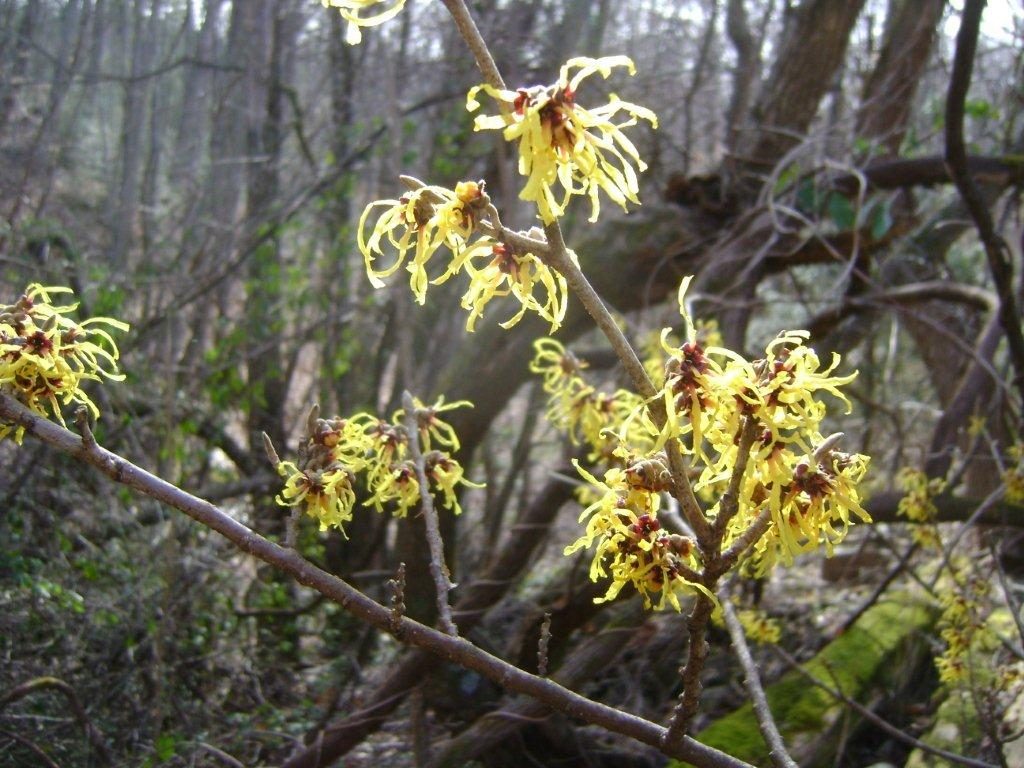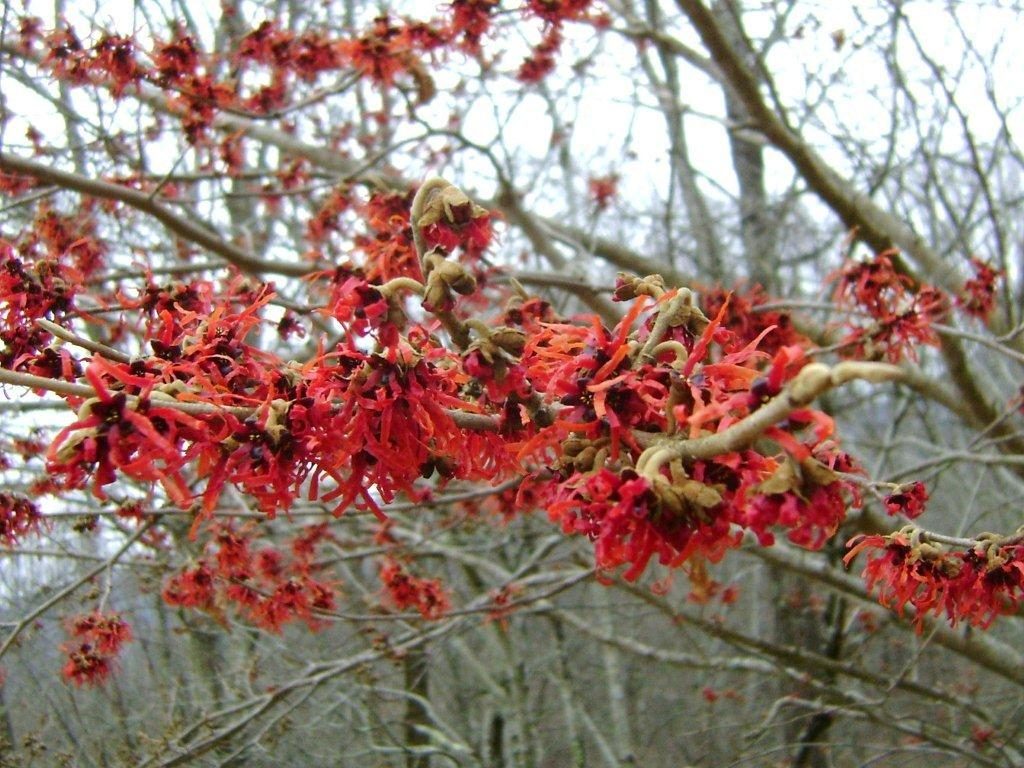Witchhazels (Hamamelis spp.) are somewhat coarse, loosely-branched, medium to large, deciduous shrubs that typically grow 12-20 feet tall. (USDA hardiness zones 5-8). They are particularly noted for their strapped shape, often fragrant, mid- to late winter flowers which appear before the spring leaves emerge. Five cultivars were selected by Mr. Tim Brotzman, an Ohio nurseryman who has been growing witchhazels for over than a half century.

Witchhazels generally grow 12-15 feet tall with an upright, vase-shaped, ascending branches and a spreading habit. The sweetly fragrant long-lasting flowers appear in February and last into March. The bright green 5-6 inch circular leaves appear weeks later in spring. Yellow-orange to yellow fall color can be quite attractive in some years. The first three winter-flowering witchhazel are Chinese hybrid witchhazel (H. x intermedia):
1. ‘Jelene’– clusters of bright coppery orange flowers
2. ‘Diana’ – sweetly fragrant copper-red flowers
3. ‘Primavera’ – bright yellow, spider-like flowers with narrow 3/8 to 5/8 inch long petals
4. Chinese witchhazel H. mollis ‘Wisley Supreme’ – fragrant golden-yellow flowers

5. Japanese witchhazel ‘H. japonica ‘Shibamichi Red’ – is a relatively recent introduction of Japanese witch-hazel named after the well-respected Japanese nurseryman, Akira Shibamichi. Flowers open a bit on the late side of the February/March period to reveal unusually showy cherry red, strap-shaped petals which are highly scented. This variety grows more slowly and the blooms are a bit smaller than hybrid witch-hazels. The shrub attains a height and spread of 8 feet.
Witchhazels are best planted in a shrub border or woodland garden that receives at least one-half day sunlight. They’re valued for fragrant late winter flowers and good fall color. Clip and bring in an attractive winter bouquet that will add fragrance to your home.
No serious insect or disease problems trouble witchhazels. Occasionally, caterpillars and Japanese beetles may chew on the summer foliage. Witchhazels are deer resistant.

 Posted in
Posted in 
